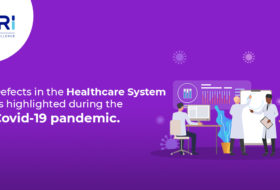Companies of all sizes struggle to keep up with the rapid rate of technological change. Technology opens up new economic opportunities, but it also widens the skills gap, notably in manufacturing, healthcare, and construction, where demand for qualified people is extreme.
How can companies bridge the skills gap while also keeping the people they already have? Our increasingly technological environment gives companies a substantial competitive edge for upskilling or training and improving their workers’ skill sets. When it comes to coming out on top after the COVID-19 disaster, businesses should begin reskilling their employees right once.
Employees benefit from upskilling since it helps them enhance and update their abilities while also increasing their value to the organization. Teaching new, advanced skills to employees is no longer a favor from firms in today’s fast-paced world; it is a must for businesses to succeed in today’s fiercely competitive marketplace.
With the startling consequences of the fast integration of technology disruption and digital transformation brought on by the Fourth Industrial Revolution (4th IR), many organizations find it more challenging to keep up with the rapid pace of change. This, along with the expanding skills gap, is why companies must engage aggressively in employee training and development to continue growing and retaining their best employees. When it comes to weathering any shift, it may be the difference between the firm prospering and just barely surviving if it does not fill up the skills gaps.
“Lots of companies do not succeed over time. What do they fundamentally do wrong? They usually miss the future.”
– Larry Page, Google co-founder and computer scientist
What exactly is training and development for employees?
Intersecting words like employee training and development include a wide range of employee learning methods. On the other hand, employee training refers to programs that help employees develop specific skills or information that will help them perform better in their jobs. Employee development is a collaborative activity between the management and the employee. This training plan aligns with the organization’s objectives and acts as a guide for employees to acquire the skills they need. Learning and development (L&D) in business is now more critical than ever because of the effect of the 4th Industrial Revolution and the COVID-19 pandemic.
Insufficient internal capabilities when integrating technology with technical expertise is one of the main problems company executives encounter pushing disruptive technologies. New technologies arise as industries evolve, having a significant influence on education and development. Teams will be better equipped to learn or reskill on the fly because of the potential to combine new technology with innovative learning techniques.
What your staff will gain by retraining or upskilling
A rapidly changing environment necessitates the pursuit and prioritization of ongoing professional growth. Employers have a critical role to play in helping employees develop these abilities.
Employee development and training are critical for the following reasons:
Positive effects on employee morale
Employers have a constant struggle in attracting and retaining top-notch employees. One approach to combat this is to provide employees with growth possibilities. Incorporating development program options into employment contracts fosters employee loyalty and increases staff retention by establishing a sense of worth. Not only is it crucial to invest in the professional development of your employees, but learning and development experts throughout the world are reporting a greater desire than ever before for upskilling.
For the first time in 2020, more than half of the professionals polled by Get-Smarter indicate they want to switch employment within the following year. Furthermore, 51% of those polled believe they may switch careers entirely.
Educating the next generation of leaders
Human resources experts might choose current workers to be managerial candidates or begin by acquiring new leadership talent. Companies may ensure that future organizational goals and succession planning are constantly considered by implementing leadership development programs.
Increasing Productivity is the first step
There are several reasons businesses should consider training their staff, but this is the most important. Every company, it should go without saying, strives to improve its output. Why? Because greater output means more revenue.
Employees benefit from upskilling training programs in a variety of ways. Using this approach, they assist workers in better understanding their clients’ wants and expectations and then give them ways to meet those demands. As a result of these training sessions, employees better understand the abilities needed to increase productivity at their firm and participate in activities that assist them in acquiring those skills.
Improve Workplace Relationships
Activities that help employees improve their skills promote communication among them. It is common for employees to work in groups or pairs, which strengthens the bonds between them and their coworkers. As a result, the workplace is more pleasant and conducive to forming long-term connections among the personnel.
An increase in employee commitment in the workplace
Frequent training programs and development activities may assist keep employees engaged while also ensuring that personnel, abilities, and procedures are continually assessed and improved. After assessing their teams’ present skills and abilities, managers will proactively create development programs that address any possible skills gaps.
True lessons coming to the rescue
A more significant number of upskill activities at work can help employers better train their employees. Because each employee has a unique learning style, using general exercises will not be effective. Therefore, each employee’s requirements and learning capacities must be taken into consideration while designing the activities. In addition, firms should invite industry experts and have them conduct staff training sessions.
The advantages and value of training and development imparted by True-lessons have a cascading effect: leaders feel competent and can effectively influence employee performance; skilled and engaged employees result in high job satisfaction, commitment, and thus retention; and workforce improvement and engagement benefit an organization’s overall profit. Regardless of the type of training and development given, it must be in line with future workplace capabilities, support its commercial objectives, and be presented in a creative style that reflects its digital transition.
Employers must make an effort to give their workers upskilling possibilities. This will be a big motivator for the company’s workers. In the future, they’ll prefer to work for/with them over other companies. For businesses to be successful, they must compensate their employees for their hard work and the resulting profit.
Conclusion
In today’s pandemic-affected economy, skills are more critical than ever. By going beyond traditional training and concentrating on the competencies required for specific positions, job-centric upskilling may help job seekers, businesses, and the economy as a whole.
The trend toward job-centric upskilling represents a paradigm shift: rather than focusing on the job seeker, it is now about effectively educating individuals to generate value for specific companies. Upskilling successfully needs close ties to the labor market, widespread support for participants, and an emphasis on quantifiable outcomes to promote continual development. Employers providing upskilling services should bear the following three success criteria in mind: identifying industry requirements, providing necessary assistance, and assessing effectiveness.
Finally, TRUE LESSONS provides an upskilling platform that results in good positions for working professionals and aspiring candidates in the clinical research field, which implies training applicants to thrive in the workplace. Job-specific upskilling can help businesses expand their talent pool and hence the diversity of their workforce.





